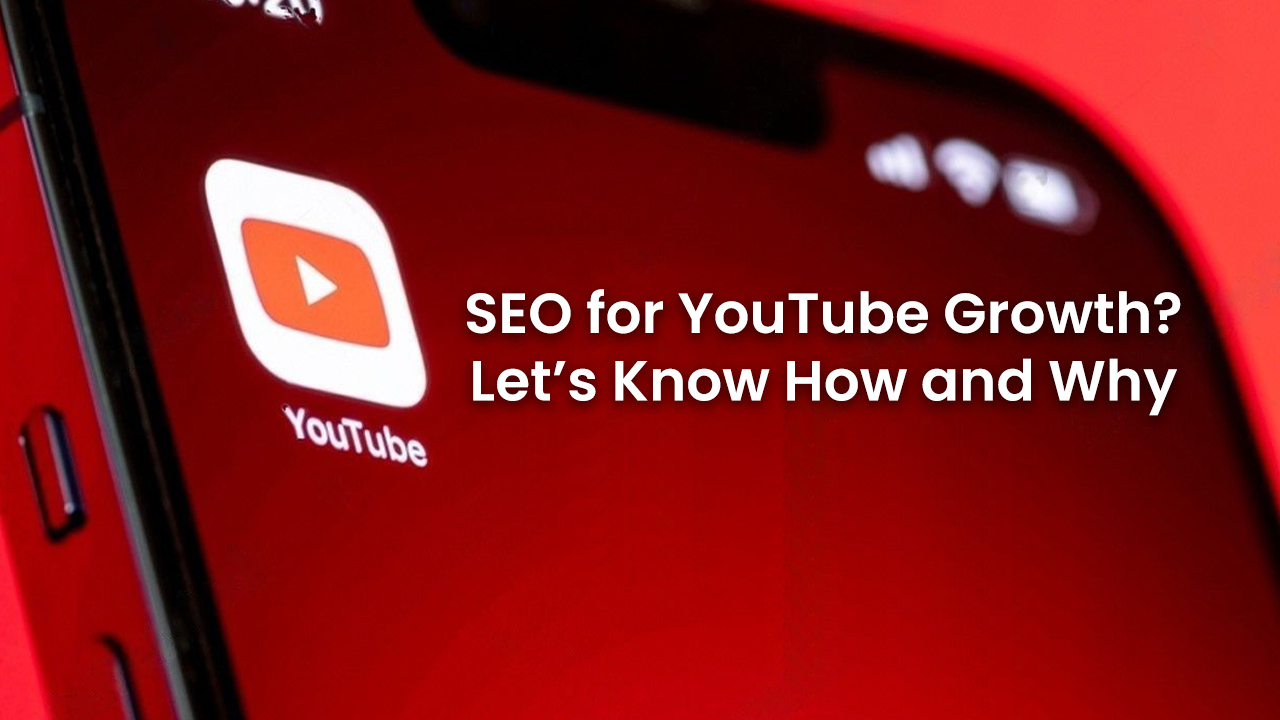Do you know Youtube is the second largest search engine in the world after Google? With over 500 hours of videos getting uploaded every minute, this platform is constantly growing. Now, you must be wondering how would your video rank and reach your audience with such huge online traffic. No doubt, there is a clear chance of getting lost in the sea of videos. All you can do is optimize your videos using SEO’s best practices. By using these SEO tricks you can build a strong SEO strategy for your YouTube channel.
What Is A Youtube SEO Strategy?
Search engine optimization is an ever-changing practice to rank highly in search engine results pages( SERPs). Unlike Google, which uses backlinks and other factors to evaluate rank, YouTube SEO involves optimizing your channel, playlists, metadata, descriptions, and videos. You can optimize your videos for search both within and outside of YouTube.
A key component of a YouTube SEO strategy is harnessing the power of your video’s text in the form of transcripts, closed captions, and subtitles, which can positively impact user experience, engagement, watch time, viewership, and SEO.
Here are 4 tips for maximizing views and boosting your YouTube SEO.
- Adding Keywords
Before you can boost your SEO Strategy for your Youtube, you need to select the correct keywords or phrases for your video(s). Keywords often land in video titles and metadata, and when spoken in the audio, keywords appear in captions and transcripts. That’s a win-win for SEO. Keywords and keyword phrases should correspond with a) whatever describes your video accurately and b) the words and phrases that users enter in search engines to find content like yours. To find out what phrases and keywords people use in search, you will have to do some keyword research. An easy strategy to find a keyword for your video is to use YouTube’s Search Suggest. Type a word or phrase relevant to your industry in the search bar and see the suggestions that YouTube offers.
After you have identified a great keyword, include it in your video file’s name so YouTube knows your video’s topic. For example, your file name could be “makeup-tutorial-for-the-hulk” followed by your video file type.
Jibro Tip: For individual videos, try going after “long tail” keyword phrases, which are more specific. For example, “makeup tutorial for the Hulk” would be a more targeted keyword phrase than just “makeup tutorial.”
- Add a transcript to your Video
The video description is the best option for displaying your transcript on YouTube. The description field fits 5,000 characters, which is usually enough to fit a transcript for a dialogue-heavy, 10-minute video. If your transcript doesn’t fit or you want to include other important information in the description, like a call-to-action, you can add a shorter version with a link to the full version on a separate web page. According to Backlinko’s research, there is no correlation between descriptions optimized for a certain keyword and the rankings for that term. Although keyword-rich descriptions are still a recommended best practice as they can help your video rank for related terms and appear as a “suggested video.” Transcripts can also boost engagement by making content quickly scannable.
- Add Subtitles in Multiple Languages
Just as English captions make your videos accessible to more viewers, translations further expand your audience and increase YouTube SEO. YouTube’s global reach is massive. Only 16.4% of YouTube’s site traffic comes from the U.S., and around the world, over 2 billion logged-in users watch YouTube every month.
Foreign language subtitles let international and non-native English-speaking viewers enjoy your videos. Search engines will also index your translated caption files and include your video in search results in those languages. This can be huge for a YouTube SEO strategy since you have a better chance of ranking higher for non-English keywords due to lower competition.
- Add Keyword optimized Tags, Titles, and Descriptions
Once you have a great keyword, you need to ensure that the texts associated with your video are keyword-optimized.
For example, if you publish videos about makeup tutorials, make sure you optimize the title, descriptions, and tags for the phrase “makeup tutorial.”
Keep in mind: search engines have wizened up to keyword-stuffing, the practice of over-using keywords and variations of keywords to try to hack the system. Don’t bother with that. Write for humans, not robots, or else you may get penalized.
Once you have done keyword research and picked your desired keywords, incorporate them naturally into the following pointers:-
- Title- Fits 100 characters but truncates at 70 characters, meaning your most important information and keyword should be close to the front. Use compelling language to encourage a click: “how-to,” “advice,” “tips,” or numbered lists can help. For example: “7 Tips to Increase Video Subscription Rates.”
- Meta Description- Fits 5,000 characters but truncates at around 120 characters depending on your device. For e-commerce sites, it is crucial to include a link to your product, considering more than half of consumers are influenced by product videos. Remember to include the HTTP:// or it won’t be clickable.
- Tags- Fits approximately 500 characters, but don’t go overboard. Use double quotes (“) to surround phrases so your video is an exact match for a long-tail keyword phrase. For example: instead of tagging your video as “makeup” and “tutorial,” tag it as “makeup tutorial.” Think like a user and always add tags in order of importance.
Monitoring these metrics over time will help you see which videos have the most engagement and the factors contributing to their success. Take note of what sets these videos apart from ones that don’t perform as well—you might notice patterns in the topic, type of video, length, or posting schedule.
Want to boost video SEO? Get started with Yuved Technology today!

